by Gregory Brew
On January 16, 1979, Mohammed Reza Pahlavi, the shah of Iran, boarded a plane at Mehrabad Airport near Tehran. He would never return. Iran, where he had ruled as monarch and dictator for several decades, was in the throes of a revolution, and would soon be led by a new Islamic government led by Ayatollah Ruhollah Khomeini. Fifty-four years of Pahlavi rule, and 2,500 years of Iranian monarchy, were over.
The flight of the shah was an event of profound global significance. It was also of critical importance to the United States. Prior to his downfall, the shah was commonly seen as a U.S. ally, a pro-Western monarch whose modernizing reforms and steady rule made Iran an “island of stability,” in the words of President Jimmy Carter.
In reality, however, American attitudes towards the shah changed considerably over time. From an inexperienced neophyte wracked with indecision, the shah gradually came to be seen as a “revolutionary monarch” and a pillar of U.S. Cold War strategy. His faults, evident from the beginning, were ignored or excused, even as his policies exacerbated Iran’s problems, eventually bringing about his fall from power.
Mohammed Reza Pahlavi was 21 years old when he ascended the Peacock Throne in 1941. His reign coincided with the global Cold War, a conflict in which Iran played a significant role. American policy-makers pursued an alliance with Iran, hoping to keep it from falling into communist hands. The shah offered “the only present source of continuity of leadership,” yet to many foreign observers he was a contradictory figure. “Too westernized for an Oriental country,” the shah was committed to reform but unable to accomplish it. He lacked the imperious authority of his father, the autocrat Reza Shah. “His indecision is monumental,” concluded one U.S. analysis, “and his moral courage debatable.” The United States wanted a strong-man in Iran, yet was consistently disappointed by the Pahlavi monarch.
The shah’s greatest test came in 1951, when nationalist politician Mohammed Mossadegh rode a vast wave of popular support to become prime minister. Rather than oppose Mossadegh, the shah shrank from public view. “He dare[d] not talk back or step out of line,” according to one CIA report, for fear of attracting public condemnation. Iran’s ruler “[was] so indecisive and vacillating” that the United States could not count on him to take determined action.
The United States hoped to remove Mossadegh, and wanted the shah’s support. Although the idea of the shah leading the government himself was “unrealistic,” it was clear that any new regime would require the blessing of the monarch to appear legitimate. If the shah did not cooperate, he could be replaced by “one of his brothers.” After considerable coaxing, the shah chose to back the coup that removed Mossadegh on August 19, 1953.
The shah, “a new man” in the aftermath of the coup, shed his customary indecision. Pushing aside his rivals, he emerged as the single most important political figure in Iran. He deployed SAVAK, an internal police force, to root out dissent, and used American aid to launch a military and economic build-up.
Although the United States backed the shah, many American officials doubted his staying power. The shah had the backing of “a corrupt group of rich landowners,” but lacked support from the rest of Iranian society. “The overthrow of the monarchy is likely,” concluded one CIA report, unless the shah undertook “substantial reforms.”
The shah proved a poor administrator, wasting millions on ill-conceived development schemes and military hardware. In the early 1960s, rampant overspending brought about a financial crisis. The United States, fed up with the shah’s mismanagement, encouraged him to step aside, and briefly backed the moderate Ali Amini as a new premier.
To regain the support of the United States and solidify his position at the top of the government, the shah launched a new development campaign, the “White Revolution.” The centerpiece of this new initiative was the break-up of all major landed estates and the redistribution of land to Iran’s peasants. Reviews of the policy were mixed. Although the U.S. ambassador hailed the shah as a “revolutionary monarch,” others thought the initiative was another hastily implemented attempt at rapid economic development.
Iran’s economy took off in the mid-1960s, achieving rapid growth rates and accelerated industrialization. The advancement was unbalanced, however. Agricultural growth averaged 2.1 percent per year, compared to 15 percent growth in industry, and failed to keep up with consumption: by 1968, Iran was importing wheat to prevent starvation. The economist Hossein Mahdavy, who would later coin the term “rentier state” to define the shah’s Iran, warned that unless Iran’s rural masses received some additional support, a violent confrontation would ensue “as the only way to bring about a solution to Iran’s ills.” His prediction, made in 1965, would take 14 years to come true.
But such concerns did not impact the shah. Increasing oil revenues funded a spending binge: investment in arms exploded, rising from $1.9 billion in 1970 to $10 billion by 1976. The budget was never balanced, but timely increases in oil royalties, as well as loans from the World Bank, kept it from insolvency. Convinced of the shah’s success, the international press hailed the achievements of the White Revolution. At the height of his prestige, the shah hosted a glamorous celebration of the monarchy in 1971. In 1973, he claimed that Iran was “more democratic” than most European countries, while simultaneously arguing that to accomplish modernization, “one can’t help but be authoritarian.”
As his power increased, the shah faced less criticism from Washington. The shah “is the only personality on the scene” who could govern Iran, according to one State Department memo. Under President Richard Nixon, Iran became the linchpin of U.S. Middle East strategy, acting as the “guardian of the Gulf.”
Yet the cracks running through the Pahlavi edifice were still evident. When oil revenues fell in 1976, Iran stood on the brink of insolvency. Inflation and unemployment aggravated by runaway spending led to instability in 1977-1978. Wracked by indecision and weakened by illness, the shah deployed a confusing combination of liberalizing reforms and violent repression, which only stoked further opposition.
Until November 1978, official U.S. policy was “unequivocal support for the Shah,” though analysts worried about Iran’s rising instability. By January 1979, it had become clear that the shah was finished. On January 16, the shah and his family departed the country. His cancer having metastasized, Mohammed Reza Pahlavi died in exile in Egypt on July 27, 1980.
The shah was a complex figure who struggled with the responsibilities of his position and tried, with little success, to resist the same authoritarian tendencies displayed by his father. Today, Iran’s government remains oppressive, dictatorial, and arbitrary. The crucial difference is that the close alliance maintained by the shah and the United States has collapsed into confrontation and suspicion.
Nostalgia for the Pahlavi era is growing. The son of Mohammed Reza Pahlavi has emerged as a potential leader for the Iranian opposition and enjoys support from the Trump administration, which seeks to oust the regime in Tehran through a campaign of “maximum pressure.” Yet the legacy of the U.S.-Pahlavi alliance is a complicated one. The long road of the shah, which through its twists and turns brought Iran’s monarch to the very height of his power, ultimately ended in disaster, both for himself and for his American benefactors. The aftershocks of that disaster continue to affect U.S.-Iranian relations today.
Gregory Brew is a post-doctoral fellow at the Center for Presidential History at Southern Methodist University, where he studies the history of U.S.-Iranian relations and international energy. His work has appeared in International History Review and Iranian Studies. Follow him at @gbrew24

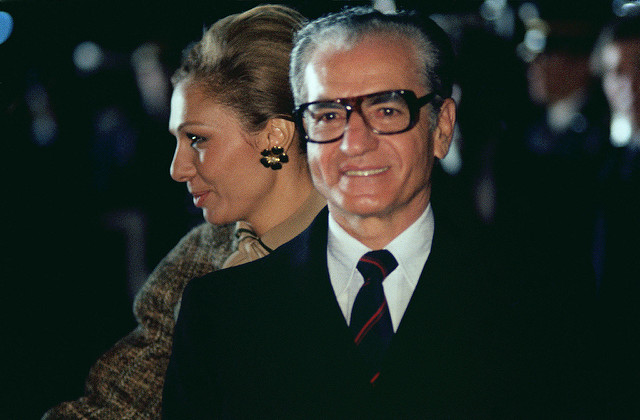
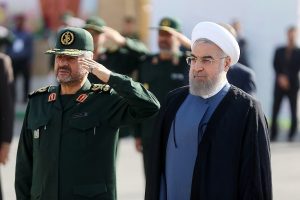
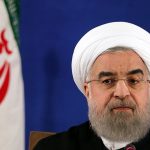
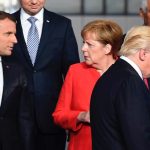
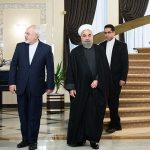
It is very clear to all Iranians that the Shahanshah could have easily obtained the sympathy of all Iranians, if he had told the people he was suffering from cancer. No one would give one moment of thought to Khomeini. But above all, if he had not died he would have defeated Khomeini. What happend in the hospital in the US is clear.
So the question is why didn’t he tell the people he had cancer. It is because he wanted to carry out his duty for his country. He thought he would recover. He trusted the Americans.
What is very clear, is that he could have used his army to put Iran in lockdown as it is now and destroyed the alien forces who by today’s standards were Islamic terrorists.
Here was a person who helped the West against Soviet Imperialism and got no credit for it. Communists did exist in Iran and they wanted to help the Soviets. The Shah identified the “Alliance of Red and Black” and you can clearly see it now. Iran is truly under Russian control.
Any rational analysis produces these basic results.
But this is my view, and I thank LL for giving me the opportunity to express it. Let us hope others will be polite enough to leave me alone. But these Ayatollah supporters want to silence all. Just watch.
Good riddance.
All ruthless despots and autocrats are corrupted by power until they fear shitless of their subjects at which time they become desperate. Once they or their supporters react to the uprising out of desperation usually they’re done! Good riddance!
here we go again! ALI MOSTOFI talking from his rear end.
Leave ALI MOSTOFI alone!
He truly is the Trolloftrolls here.